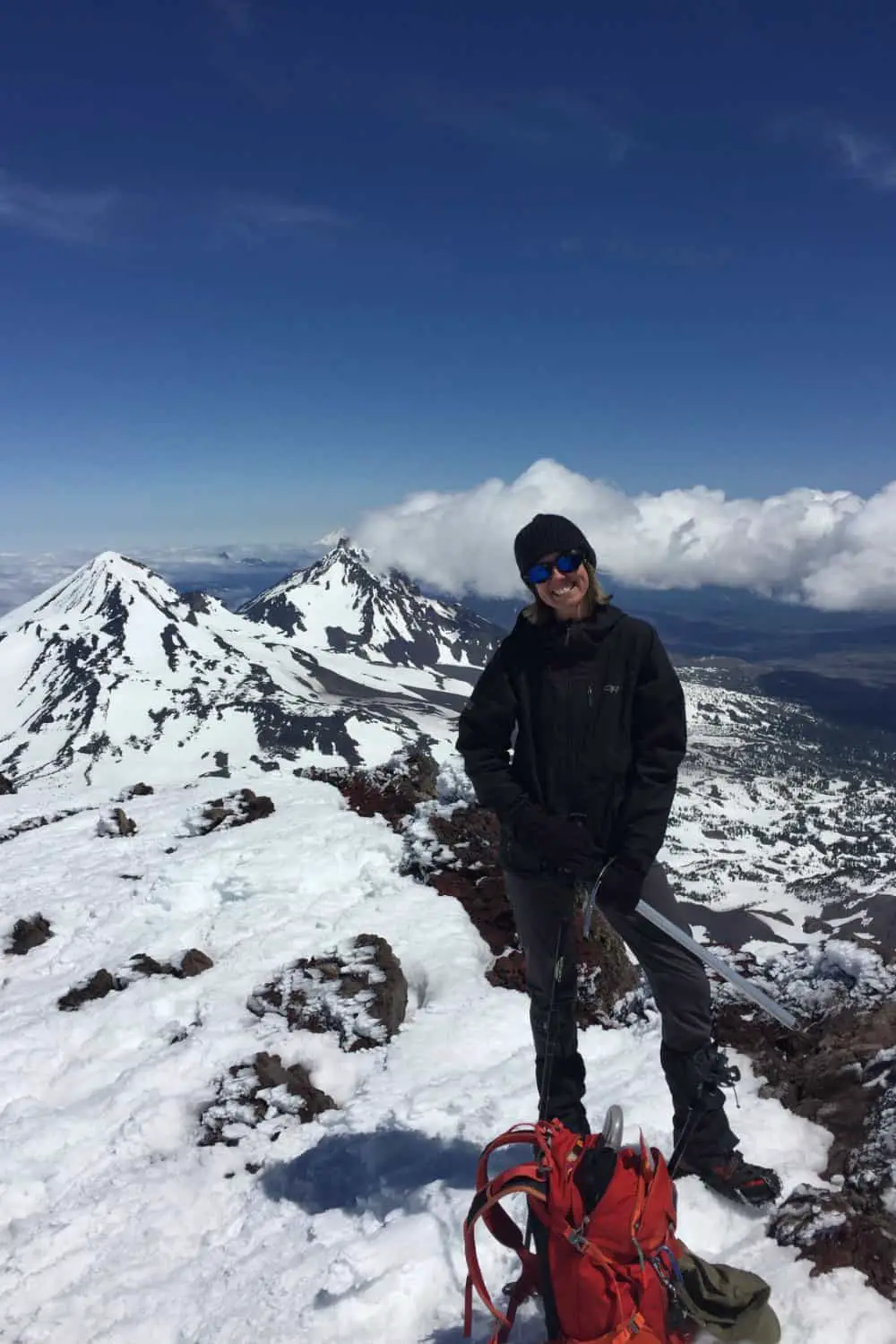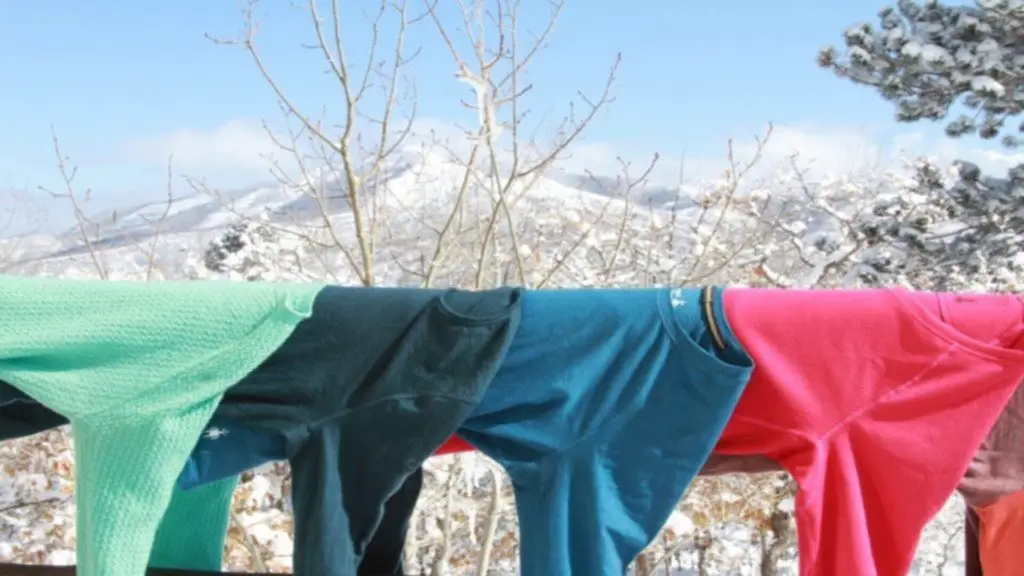Without a good baselayer, the rest of your layering system will fail. So what should you look for in a base layer? What fabrics, fit, and features are and aren’t recommended? Let’s find out…
Fit
After your sports bra, this is the layer that will be right next to your skin. It should fit snug but not tight, and definitely not be roomy.
Fabric
Base layer fabric needs to work its wicking magic and get the moisture away from your body. Let’s look at the different fabrics and their attributes:
Wool
Wool, whether Merino wool or Smartwool, is a great choice for base layers, as it naturally helps regulate body temperature and has a great capacity to absorb moisture. It is odor resistant, highly breathable, and soft on your skin. Wool helps keep you warm when it’s cold and cool when it’s hot. Generally, here in Washington from about October to June, I live in my long sleeved Smartwool top (the Merino 150 crew), and add layers from there.
- Soft, ultrafine fibers
- Wicks moisture well but won’t feel quite as dry as a synthetic fabric will, and takes a little longer to dry
- Can be blended with synthetics
- Can come in light, mid, and heavy weights
- Cools in warm weather
- Strangely odor-free (it’s naturally resistant to bacteria)
- Durable, but if you’ll be wearing it alone rather than strictly under other layers, consider a blend, which won’t get roughed up by pack straps, branches, or rocky summit nap surfaces
Non-Wool Alternatives
Capilene is a synthetic wool alternative that is increasing in popularity and is a great option for vegans or those with wool allergies. Silk, nylon, polypropylene, rayon, polyester, or a blend of synthetics make great lightweight base layers as well.
Silk
- Exceptionally soft
- Not odor-resistant
- Good for non-extreme weather
- Doesn’t wick as well as wool, and is not as durable
- Supple, slinky texture allows layers to easily slide over it
Synthetics
Synthetics such as nylon, polypropylene, rayon, polyester, or a blend of synthetics are gaining popularity for the following reasons:
- Super dry; synthetics excel at wicking and dissipating moisture
- More durable than wool or silk
- Some synthetic base layers have a finish that inhibits bacteria
- Spandex added to any of these gives the fabric a little stretchiness
Base Layer Weights
Generally your base layers will be offered in three different weights (light, mid, and heavyweight). While you might leap from “I get cold easily” to “I need a heavyweight baselayer” keep in mind that the baselayer’s main job is to manage sweat—it’s the mid layer that keeps you warm.
- Lightweight (moderate to cool temps)
- Midweight (cold temps)
- Heavyweight (below freezing)
Then the only other main consideration is the cut/style. I personally prefer a simple long sleeved crew neck with no zippers, buttons, pockets, or hood. Quarter-zips are popular as well, as some folks like to be able to vent a little.
Our Favorites:
- Smartwool Merino Women’s 250 quarter-zip
- Smartwool Merino Women’s 150 crew
- Carhartt Base Force Women’s quarter-zip
- Arcteryx Women’s Rho LT zip
- Icebreaker Women’s Merino 200 Oasis Crewe

Wendy Harrington is a California native who has lived in a small town at the foothills of the Cascade Mountains in Washington state since 2001. Her love of trail running and peakbagging has led her to summit all five Washington volcanoes, climb to the high points of three states, and put nearly a thousand miles a year on her boots. Her loves include ridgelines, saddles, granite, one-day pushes on big mountains, anything volcanic, long solo days, and objectives that push limits and test endurance.

